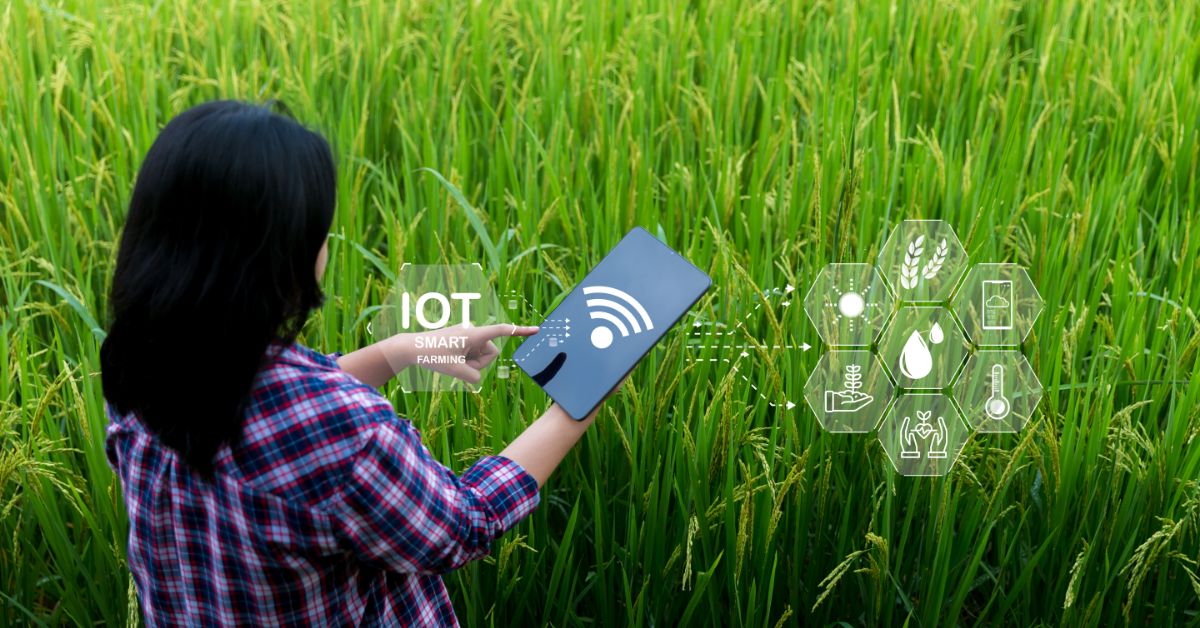How IoT Technology Can Monitor Crop Growth & Health?
he agriculture sector in India is a crucial part of the country’s economy, providing livelihoods for millions of people and contributing significantly to the country’s GDP. However, the sector faces several challenges, including the need for increased productivity, the efficient use of resources, and reducing the negative impact on the environment.
The world is rapidly advancing with the advent of technology, and the Internet of Things has played a significant role in this revolution. The Internet of Things (IoT) refers to the interconnected network of devices, sensors, and machines communicating and sharing data. IoT has the potential to become a game-changer for the agriculture sector. It can be used to monitor crops, soil, and weather conditions, among other things.
The Plethora of Benefits of IoT Devices
The significant function of an IoT device is to monitor various parameters affecting a crop’s health. To comprehensively understand the crops, farmers collect and analyze the data gathered by the IoT device. The benefits of IoT devices in agriculture are numerous.
One of the primary benefits of IoT devices is that they can help farmers make data-driven informed decisions by providing real-time data on various environmental factors. This information can help farmers optimize crop production, resulting in higher yields, cost-effective quality produce, and increased profit.
IoT devices are also used in monitoring crops and managing livestock. For an IoT device to function, sensors are placed in the soil to monitor moisture levels and temperature, while drones are used to survey crops and detect signs of diseases or pest infestation. This early detection helps farmers take action before the problems become severe.
In addition, IoT devices can tremendously help reduce water wastage. By providing real-time data on soil moisture levels, farmers can optimize their irrigation systems, reducing water consumption and improving yield. As water scarcity becomes a growing concern worldwide, IoT devices are beneficial in conserving water resources.
IoT devices are also used in agriculture for monitoring weather conditions. Weather sensors can be placed throughout a farm to gather data on temperature, humidity, wind speed, and other weather conditions. This information predicts weather patterns and plans planting and harvesting activities. Additionally, farmers can reduce the risk of crop damage due to extreme weather events like droughts, floods, or storms.
Another benefit of this technology is its automation of farming tasks like planting, fertilization, and harvesting. Automation helps reduce labour costs and improve efficiency. This is especially beneficial for a large-scale farming operation.
Lastly, IoT devices help improve food safety and traceability. By providing real-time data on the location and conditions of crops and livestock, farmers can ensure that their products are safe and high-quality. In addition, this information can be used to track products throughout the supply chain, providing consumers with information about the food’s production.
How To Get Started?
The application of IoT devices in smart agriculture varies from farm to farm, depending on your market segment, climate, and region. As a result, many farmers need a tailored, intelligent farming IoT solution. At TerraTech, we approach each customer individually to meet their unique needs.
Conclusion
The adoption of intelligent agriculture technology, such as IoT devices in India, is still in its early stages, but the growth potential is vast. According to a report by the Indian Council for Research on International Economic Relations (ICRIER), the adoption of smart farming tools has the potential to increase crop yields by 15-20%, reduce the use of water by 20-25%, and reduce the use of fertilizers and pesticides by 20-30%.
In conclusion, IoT devices are transforming the agriculture sector in India by providing farmers with real-time data on environmental factors, improving the efficiency of farming operations, and reducing the environmental impact of agriculture. The adoption of IoT technologies in agriculture has enormous potential to improve the livelihoods of farmers, increase productivity, and contribute to the sustainable development of the country’s agriculture sector.

